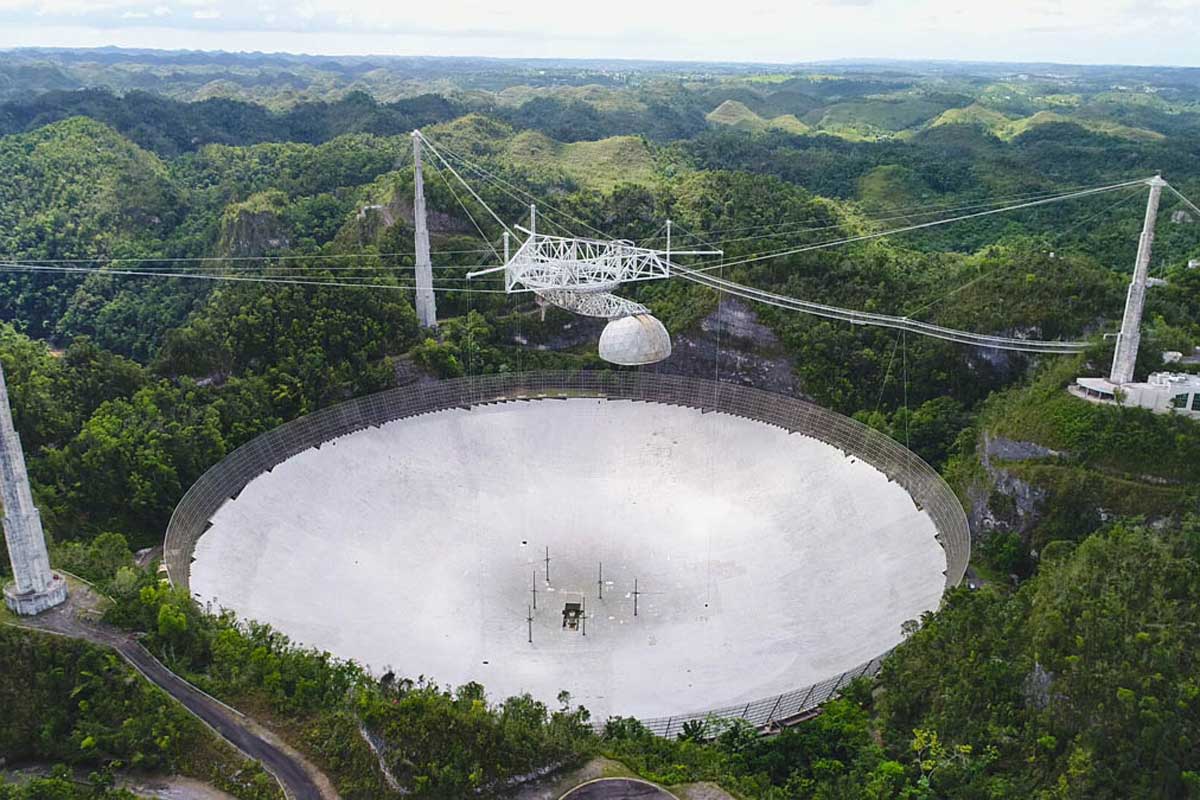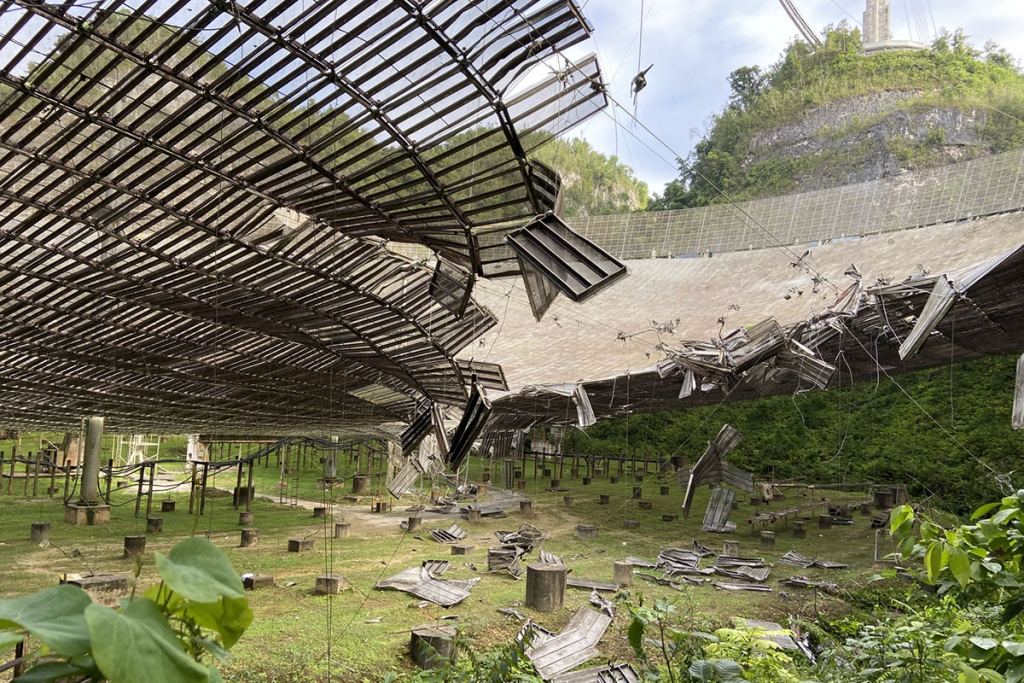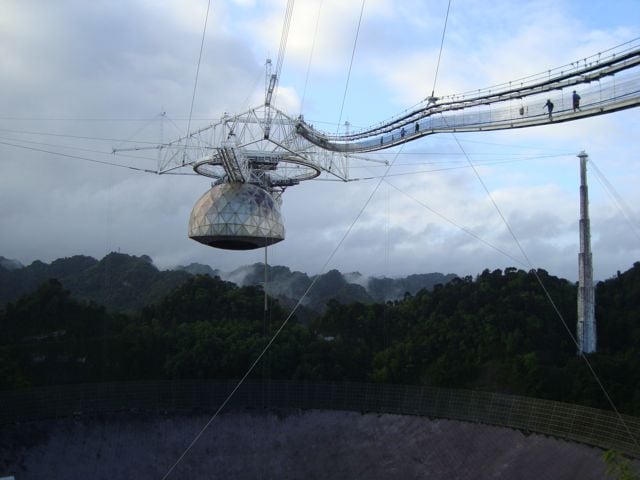On Aug. 10th, a little over a month ago, the iconic Arecibo Observatory suffered serious damage when an auxiliary cable broke and struck the reflector dish. This cable struck the observatory's Gregorian Dome on its way down and twisted an access platform before landing on the reflecting dish itself. The impact created a gash over 30 meters (100 feet) in length and forced the observatory to shut down until repairs could be made.
Since then, teams have been busy working to stabilize the structure and determine the cause. These teams are made up of technicians from the observatory and the University of Central Florida (UCF), which manages the facility for the National Science Foundation (NSF). For the past few weeks, they have been meeting with experts from various fields and laying the groundwork for an investigation and a rigorous repair schedule.
According to a previous statement by the National Astronomy and Ionosphere Center (NAIC), the 7.62 cm (3-inch) cable broke during the early morning hours on August 10th and struck 6 to 8 panels in the Gregorian Dome. Located above the reflector dish, this dome houses Arecibo's tertiary reflector system, which works in conjunction with the main dish and provides added flexibility.
So far, the joint Arecibo-UCF team has met with over 40 experts, ranging in expertise from suspension cable fabrication and installation to structural analysis and forensic investigation. An observatory engineering and safety team has also been formed that is conducting daily inspections while other technicians have created a structural model of the current state of the observatory.
The next step will involve the creation of a structural analysis that relies on computer modeling. This will assess whether other areas of the telescope are at greater risk as a result of the accident and help frame the scope of repairs and associated costs. Only then will the teams be able to attempt to retrieve a portion of the broken cable and socket for forensic analysis.
As Francisco Cordova, the Director of the Arecibo Observatory, explained in a UCF press statement:
"We know the process is taking a long time and we are eager to begin repairs. However, this is a big and complex facility, so it is taking some time to ensure we are doing things right. We have to be sure we are taking all factors into consideration before moving forward with putting people on the telescope to remove those pieces. Once those are in hand, we expect the timeline to pick up the pace."
Four commercial entities - WSP, Thornton Tomasetti, WJE and Associates, and Pfeifer Wire - have been contracted to help coordinate the investigation, review the structure, and come up with a plan for instituting repairs. NASA is also contributing personnel from their Engineering and Safety Center (NESC) and the Kennedy Space Center (KSC).
In the meantime, Arecibo's Light Detection and Ranging (LIDAR) and Remote Optical Facility (ROF) continue to operate and are contributing to a variety of research projects. The Gregorian Dome has also been moved into its "stow/safe" position and its safety pins were installed on Aug. 20th. Basic functional tests have been made on the receivers and so far, no damage appears to have been caused to the electronics inside the dome.
As soon as all the safety and structural analyses are complete and the cause of the failure is determined, the information will be shared with the NSF and the public shortly thereafter. While the Arecibo Observatory is no longer the world's largest radio telescope, its ongoing importance to the fields of atmospheric sciences, planetary sciences, radio astronomy, and radar astronomy cannot be overstated.
Arecibo is also home to the team that runs the Planetary Radar Project, which is supported by NASA's Near-Earth Object (NEO) Observations Program. As part of NASA's Planetary Defense Coordination Office, this project relies on radar observatories around the world to precisely track and determine the orbits of NEOs that periodically pass close to Earth.
In short, the number of people and institutions that want to see the Arecibo Observatory up and running again can also not be overstated!
*Further Reading: UCF*
 Universe Today
Universe Today


